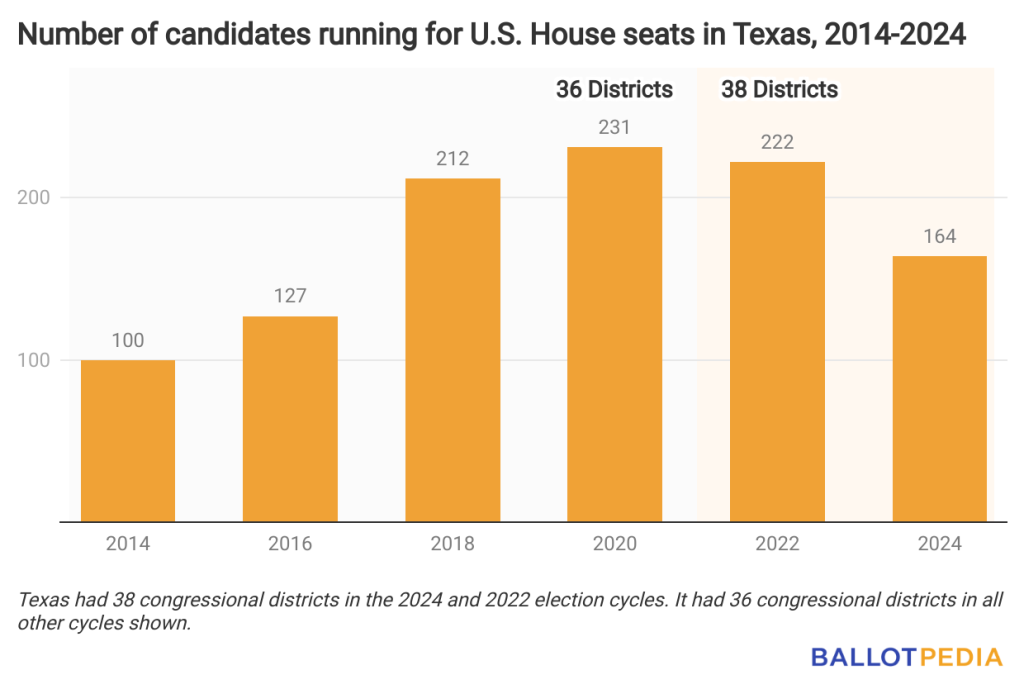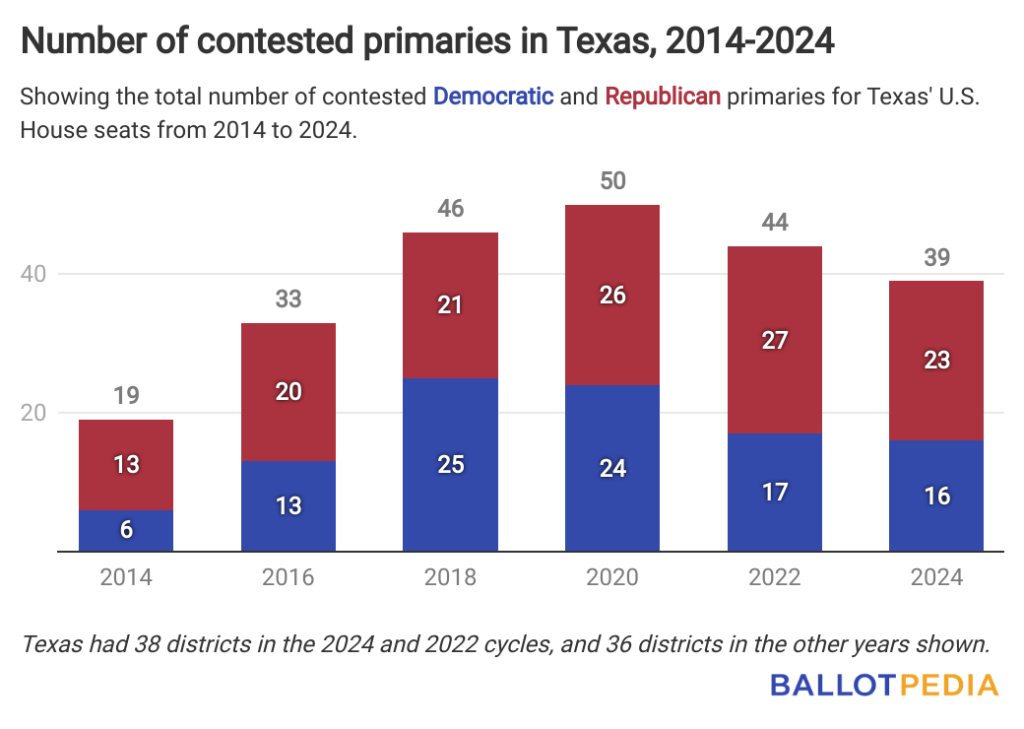This year's filing deadline for candidates running for Congress in Texas was Dec. 11, 2023.
One hundred sixty-four candidates are running for Texas’ 38 U.S. House districts, including 63 Democrats and 101 Republicans. That’s 4.3 candidates per district, the lowest number since 2016, when 3.5 candidates ran.
In 2022, the first election after the number of congressional districts in Texas increased from 36 to 38, 5.8 candidates ran per district. In 2020, 6.4 candidates ran, and 5.8 candidates ran in 2018.
Here are some other highlights from this year's filings:
- The 164 candidates running this year are also the fewest total number to run since 2016, when 127 candidates ran. One hundred candidates ran for Texas’ then-36 districts in 2014, the fewest number this decade, while 231 ran in 2020, the most this decade.

- Three seats are open this year. That’s the fewest since 2016, when two seats were open. Six seats were open in 2022 and 2020, and eight were in 2018—the decade-high.
- Reps. Kay Granger (R-12th) and Michael Burgess (R-26th) are retiring from public office. Rep. Colin Allred (D-32nd) is running for the U.S. Senate.
- Fourteen candidates—10 Democrats and 4 Republicans—are running for the open 32nd district, the most candidates running for a seat this year.
- Thirty-nine primaries—16 Democratic and 23 Republican—are contested this year. That’s the fewest since 2016, when 33 were contested. There were 44 contested primaries in 2022, 50 in 2020, and 46 in 2018.

- Nineteen incumbents—six Democrats and thirteen Republicans—are facing primary challengers this year. That’s the same number as 2022, and one more than in 2020.
- Three districts—the 9th, the 20th, and the 30th—are guaranteed to Democrats because no Republicans filed to run. Five are guaranteed to Republicans because no Democrats filed to run—the 1st, the 11th, the 13th, the 19th, and the 25th.
Texas and four other states—Alabama, Arkansas, California, and North Carolina—are holding primaries on March 5.
Winners in primary elections in Texas are determined by majority vote. In the case that no candidate receives more than the 50 percent of votes cast, the top two candidates proceed to a runoff election.


